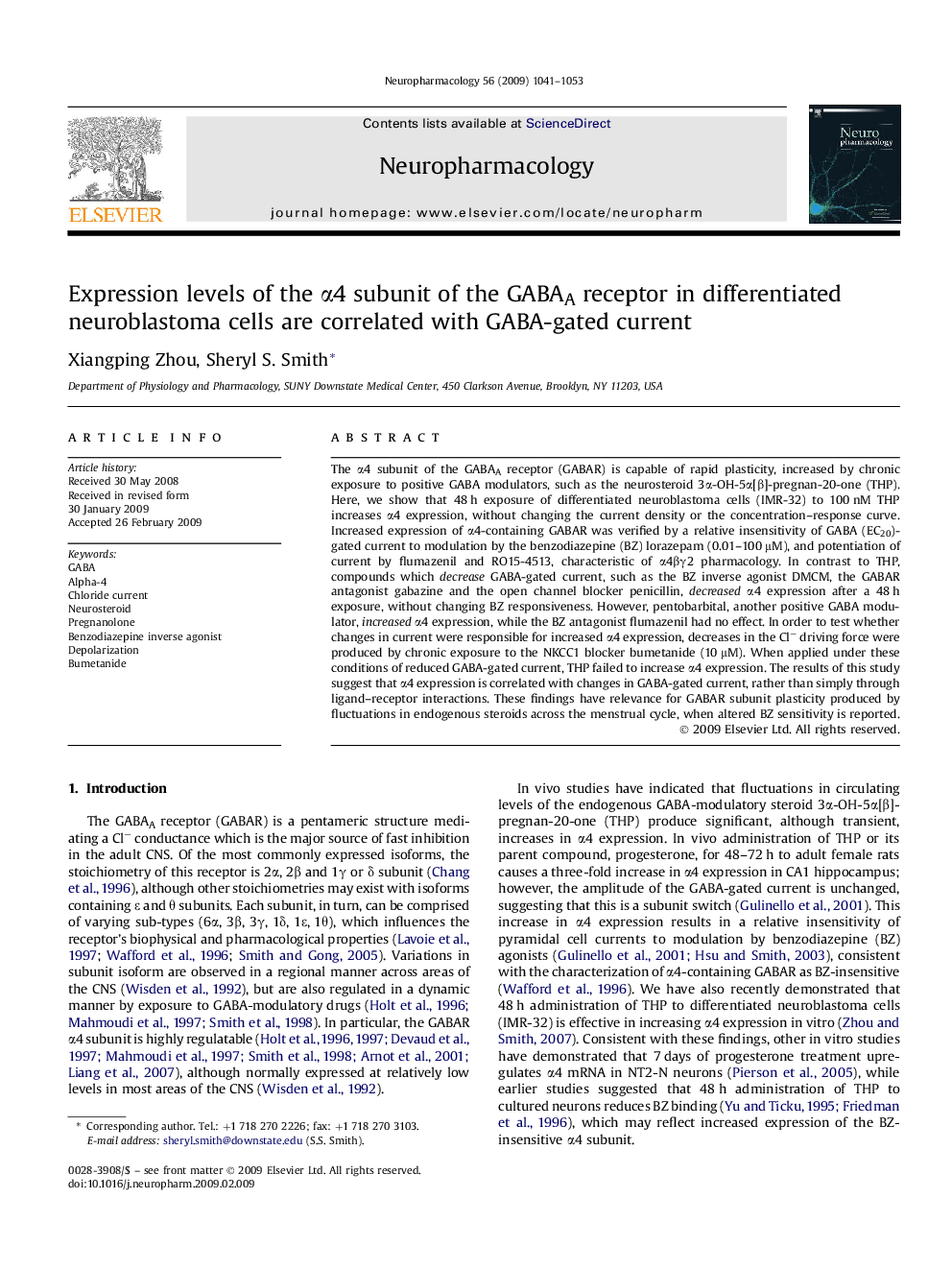| Article ID | Journal | Published Year | Pages | File Type |
|---|---|---|---|---|
| 2494307 | Neuropharmacology | 2009 | 13 Pages |
The α4 subunit of the GABAA receptor (GABAR) is capable of rapid plasticity, increased by chronic exposure to positive GABA modulators, such as the neurosteroid 3α-OH-5α[β]-pregnan-20-one (THP). Here, we show that 48 h exposure of differentiated neuroblastoma cells (IMR-32) to 100 nM THP increases α4 expression, without changing the current density or the concentration–response curve. Increased expression of α4-containing GABAR was verified by a relative insensitivity of GABA (EC20)-gated current to modulation by the benzodiazepine (BZ) lorazepam (0.01–100 μM), and potentiation of current by flumazenil and RO15-4513, characteristic of α4βγ2 pharmacology. In contrast to THP, compounds which decrease GABA-gated current, such as the BZ inverse agonist DMCM, the GABAR antagonist gabazine and the open channel blocker penicillin, decreased α4 expression after a 48 h exposure, without changing BZ responsiveness. However, pentobarbital, another positive GABA modulator, increased α4 expression, while the BZ antagonist flumazenil had no effect. In order to test whether changes in current were responsible for increased α4 expression, decreases in the Cl− driving force were produced by chronic exposure to the NKCC1 blocker bumetanide (10 μM). When applied under these conditions of reduced GABA-gated current, THP failed to increase α4 expression. The results of this study suggest that α4 expression is correlated with changes in GABA-gated current, rather than simply through ligand–receptor interactions. These findings have relevance for GABAR subunit plasticity produced by fluctuations in endogenous steroids across the menstrual cycle, when altered BZ sensitivity is reported.
